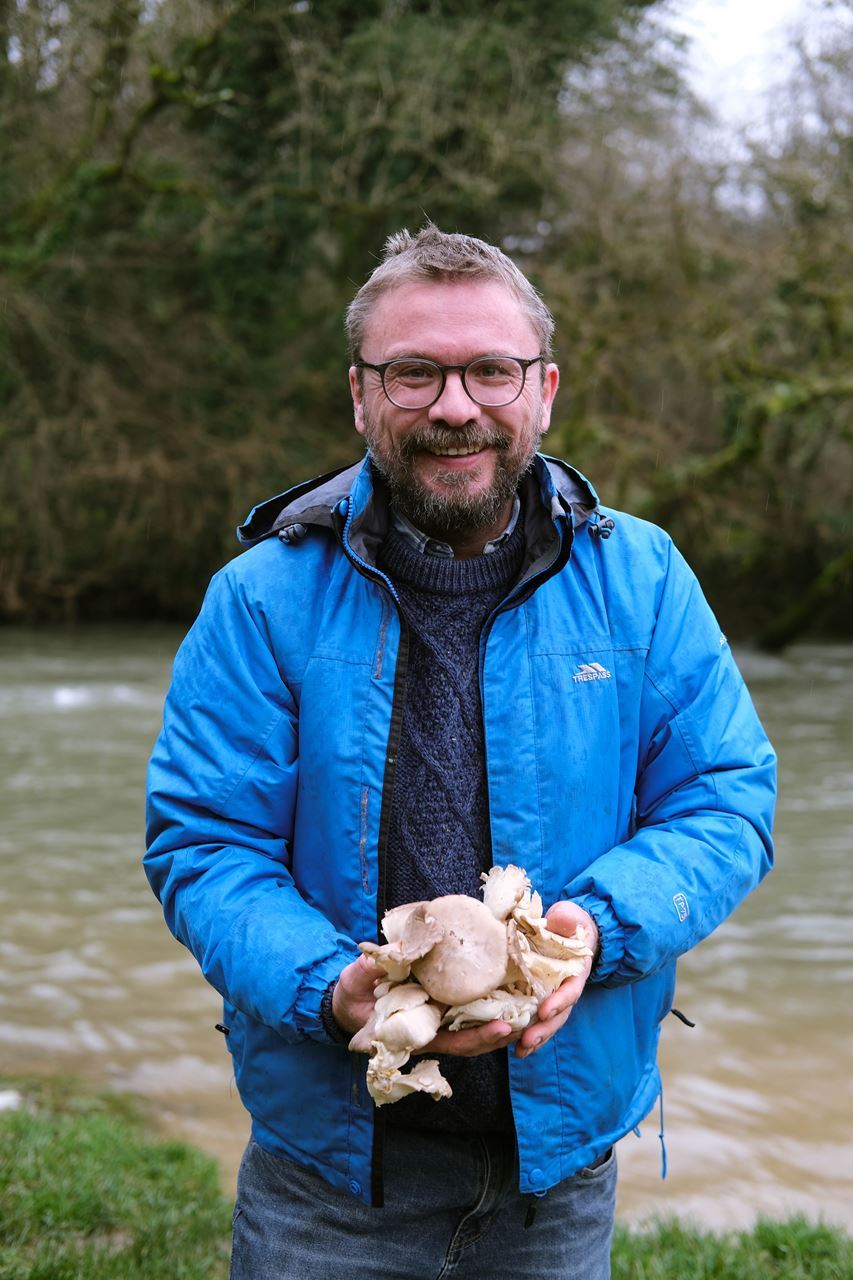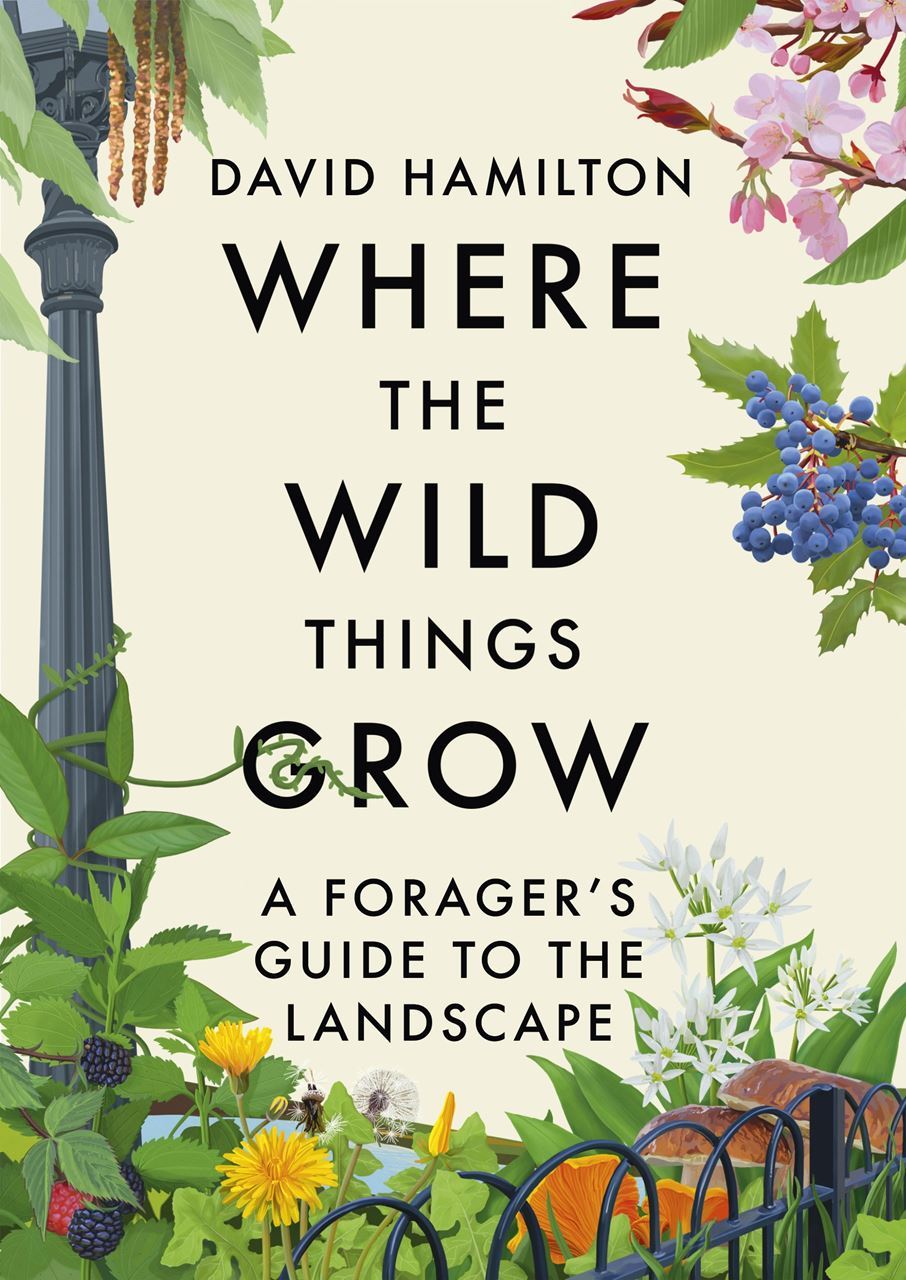After exploring the natural world in ‘Wild Ruins’, ‘ The Self-Sufficientish Bible’, and now foraging in ‘Where the Wild Things Grow’ we talked with Association of Foragers (AoF) member Dave Hamilton to understand the thread that connects his books.

Why divide ‘Where the Wild Things Grow’ into four main sections: man-made, rural, woodland, and water?
“Ordering things by where they grow helps with identification, and planning days out. Places direct how people forage and how they look for things. I’ve always done urban foraging so including that (within man-made) was important to me. ”
When and why did you join the AoF?
“I only became aware of the AoF recently. With this book, like the wild ruins books, I really wanted to travel, and to meet people foraging and feed that into the book. Then the pandemic happened so this become became more personal memoir than about other people and their foraging.”
How did you navigate the different audiences, experts and beginners, interested in reading foraging books?
“Kirty Topiwala, my editor, was really good at deciding what should go in and suggesting ways avenues to take. She wasn’t a forager and helped to construct the book as accessible for someone without the lexicon of foraging. Kirty also encouraged ethnobotanical details in the book. For example Fat Hen (Chenopodium album) grows here in farm and wasteland. It also grew in Russian gulags, where for prisoners it was a valuable addition to their impoverished diet as it was overlooked by prison guards as a weed. Through plants like this we see bits of humanity even in horrible places like the gulag. So fat hen was a secret plant, though growing in plain sight, that people ate. While nerdy details are in the book it is also pragmatic— things like a section on plants that grow in walls. While it might seem obvious to people who know those plants it isn’t obvious if you are getting to these plants and their habits. And while extolling pine needle tea, it is also handy to point out that they are often out of reach, unless you time visiting your local pines for the aftermath of high winds that break branches, which fall to the ground bringing fresh pine needles within reach. There are jokes and ideas in the book that are possibly more obvious to people who are foraging and plant literate. For example Elaegnus x submacrophylla doesn’t have a well known common name, so I’ve given it one that reflects its fruits that foragers are interested in: jelly bean bush.”
You include a whole chapter on ‘Edgeland’, what do these kinds of places mean to you?
“Edgelands are marginal places that aren’t quite countryside or city—canal side, meadow with a flyover— places where the wild crept in and reclaimed spaces. Within in them you can see signs of human life like graffiti and concrete, but also there might be otters (Lutra lutra) or Japanese knotweed (Reynoutria japonica) coming up. In edgelands councils often don’t bother attempting to control Japanese knotweed with herbicides, so they can be a good place for harvesting it free of contamination. Edgelands are definitely more accessible for a lot more people than rural areas. During wandering on their doorstep, prompted by lockdown, people have been finding new places they enjoy. In the chapter on edgelands I introduce what people might be able to forage there. If you forage land you’re connected to it, and if you’re connected to it you want to protect it. It could be the same for bird watchers and butterfly hunters, foraging is another strand to feeling connected to wild places. While we see human influence on edgelands they are still a place for wildlife.”
By definition most people think about trees when they consider woodlands, for you woodlands seem quite mushroomy?
“Yes! Woodland edges are great for foraging, and their interiors are places for mushrooms. Particularly in autumn when everything seems over it is a pleasure to see the forms and shapes of mushrooms coming up feeding on the decay. I built up confidence with mushrooms starting with those that are quite distinctive like chicken of the woods (Laetiporus sulphureus).”

How does ‘Where the Wild Things Grow’ fit in with your previous books?
“Foraging was an aspect of what I was doing at the time of writing ‘The Self-Sufficientish Bible’. Ostensibly ‘Grow Your Food for Free’ is about gardening, but within that you want to know your weedy species. ‘Wild Ruins’ followed by ‘Wild Ruins BC’ came out of foraging; I had been out foraging and kept seeing ruins. Writing about ruins was a different sort of writing, not just practical direction but also describing landscapes. In ‘Where the Wild Things Grow’ foraging is situated within landscapes.”
What was your first foraging experience?
“Making nettle soup with nettles from my parents’ garden in the 80s. I have an earlier memory from the late 70s when I was 5 or 6 of picking blackberries and dad falling into the blackberry bush it was funny (N.B. he was ok even if a bit scratched). There was a whole ritual about getting tubs to put blackberries in, finding the thickets, then picking them. I know there are now houses on the place where those blackberries grew. “
How has your foraging evolved?
“In my 20s it was quite obsessive—wanting to know what every plant was. Then going on bike journeys and foraging on the way. Now, that amount of time I had seems luxurious. With kids seeing their enthusiasm (at times) is part of it. Life is a bit busier and foraging is more en route where I can fit it in. Much more casual foraging, for example picking a handful of berries and microwaving them with sugar for a quick jam. Or a handful of garlic mustard (Alliaria petiolata) picked in the morning that will go in salad at lunch. Those big trips where I set out intending to go and forage have become rarer, and are more often if I am working teaching foraging, which I appreciate as a luxury of the job. “
How do you see foraging having changed in wider society?
“In the 1990s to early 2000s there was not much information around. There wasn’t much on the Internet and apart from Richard Mabey's ‘Food for Free’ and Roger Phillips ‘Wild Food’ there weren’t books on foraging. I remember going into a bookshop and asking for a foraging book. The reply was ‘Do you mean scrabbling round in bushes looking for food?’ and I was directed to John Seymour’s ‘The Complete Book of Self-Sufficiency’ that had just a few pages on foraging in it. I would identify plants in wildflower guides and then look them up on PFAF to see if they were edible, but there wouldn’t be recipes I could find. Now you can look at Instagram and instantly find 50 different recipes for one species. People are doing fantastic things teaming up with chefs. Foragers used to be a bit more territorial about where they foraged, and now it seems that information is not quite so guarded. Being a peer group for foragers the AoF has helped to open that up.”
What is the role for foraging books now that information is easier to find online?
“Scrolling online is different to taking information in by reading a book, you don’t get the same level of immersion and escape. A book will take you somewhere much more than being online. It is also too easy to get distracted and jump from one thing to another online. Certainly the Internet has its strengths. Identification videos where they show you all around a mushroom or plant in three dimensions are really helpful learning tools. Both Internet and books are good resources. But, we do spend too much time online. Sitting down and reading quietly is so much nicer with a book than online.”
What are your future plans?
“I enjoy teaching foraging and want to carry on doing that. Working with chefs on the creative frontier of wild foods is something I would like to do. More books are in the pipeline too. “
Where the Wild Things Grow is available at local bookshops, Amazon , and Bookshop.org
